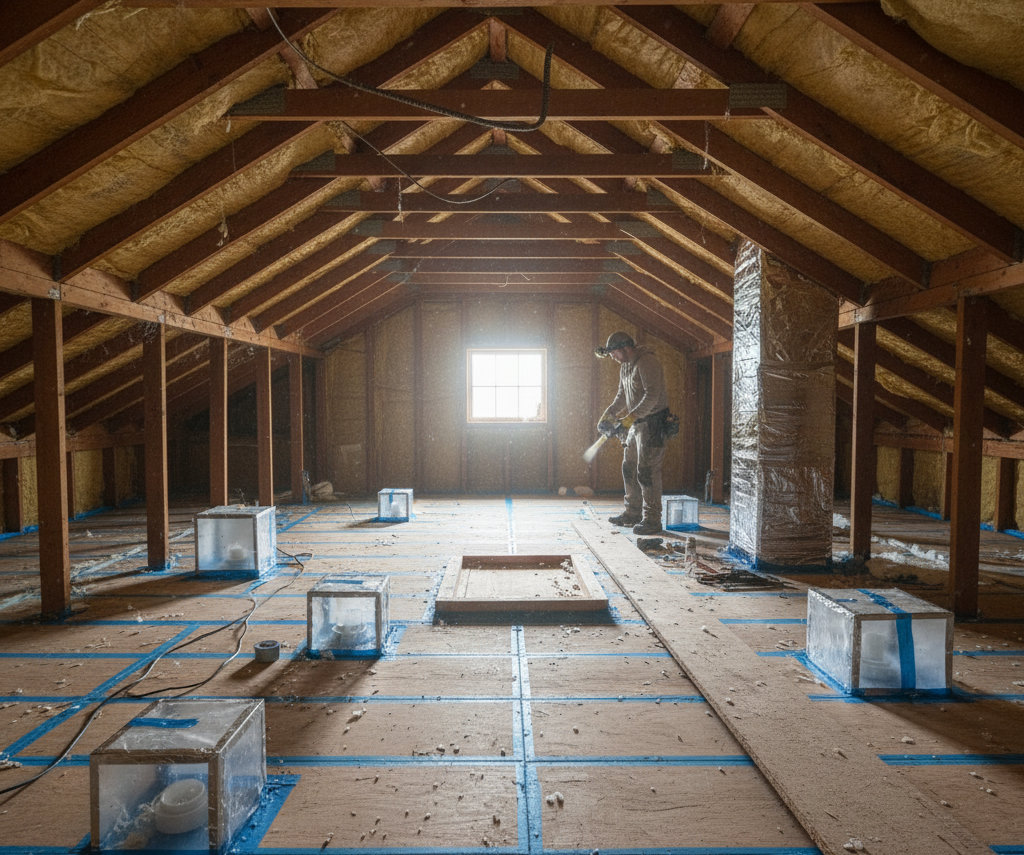
Attic insulation and air sealing help improve your home’s energy efficiency by reducing heat loss and maintaining a steady indoor temperature. A top-rated general contractor in Dallas can help you understand how these upgrades work together to save money. Insulation materials, such as fiberglass, cellulose, or spray foam, prevent heat from transferring between your attic and living spaces. Air sealing prevents warm or cool air from escaping, thereby reducing the strain on your heating and cooling systems. These improvements can lead to big cost savings and increase your home’s value.
Importance of Attic Insulation
Effective attic insulation is crucial for regulating energy consumption and maintaining a comfortable home. Insulation works like a barrier that stops heat from moving between your attic and the rooms below. Without enough insulation, heat escapes in winter and enters in summer, making your energy bills higher. Fiberglass, cellulose, and foam are popular choices, each with different benefits and installation needs. You need even coverage to prevent heat loss through weak spots. Proper attic ventilation also helps control moisture and prevent mold problems.
Benefits of Air Sealing
Air sealing your attic offers numerous benefits, including improved energy savings and enhanced comfort. When you seal gaps, cracks, and holes, you stop conditioned air from escaping your home. This makes your heating and cooling systems work less hard, which lowers your energy bills. Attic insulation and air sealing work together to maintain consistent temperatures throughout your house. Sealing also prevents moisture from entering, reducing the risk of mold and mildew. Better indoor air quality is another advantage, as fewer outdoor pollutants can enter the space. These improvements create a more comfortable living space while saving money.
Cost Savings Through Efficiency
Proper air sealing creates significant cost savings by making your home more efficient. When you prevent air leaks, your HVAC system uses less energy to heat and cool your home. The money you spend on sealing pays for itself quickly through lower utility bills. Research shows that well-sealed attics can cut energy costs by up to 30%. Better efficiency also helps your heating and cooling equipment last longer, reducing repair and replacement costs. A properly sealed attic increases your home’s value, making it a smart financial choice.
Common Insulation Materials
Three primary types of insulation are effective in attics: fiberglass, cellulose, and spray foam. Fiberglass costs less and installs easily while providing good heat resistance. Cellulose uses recycled paper treated for fire safety and offers good air sealing with sound reduction. Spray foam expands to fill gaps and provides the highest insulation value with excellent air sealing. Fiberglass is budget-friendly, but it can cause skin irritation during installation. Cellulose is an eco-friendly material, but it requires moisture protection. Spray foam works best but requires professional installation because of its expanding properties.
DIY Vs. Professional Installation
Choosing between doing the work yourself and hiring professionals depends on your skills and budget.
DIY Installation:
- Takes time and research to do correctly
- Costs less but may not seal as well as professional work
- Works for people with basic home improvement skills
Professional Installation:
- Provides expert assessment and quality work
- Costs more upfront, but often lasts longer
- Recommended for complex jobs or when you want the best results
Maintenance Tips for Longevity
Regular checks help your insulation and air sealing last longer and function more effectively. Inspect your attic at least once a year for signs of damage, shifting, or moisture issues. Check for gaps or cracks in the air sealing that may allow air to escape. Address any issues promptly to prevent energy loss and maintain optimal system performance. Keep your attic clean and free of debris to protect your insulation. These simple maintenance steps help your attic improvements continue saving energy for years.
Related Topics:
